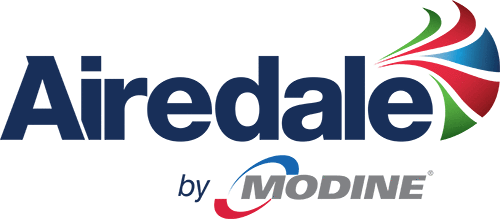Water Usage Effectiveness: Quantifying the Impact on Sustainability

Water usage effectiveness (WUE) is a metric introduced to the industry by The Green Grid, a global consortium dedicated to advancing energy efficiency in data centers. Designed to address the global concerns of water scarcity, it measures how efficiently a data center consumes water- a critical measurement for today’s sustainability-focussed landscape. Analysed in conjunction with power usage effectiveness (PUE), the two metrics form an overall picture that allows data center operators to make more impactful decisions that can form part of a meaningful sustainability strategy.
Water Usage in Data Centers?
The main uses of water in a data center are in cooling and power generation and this can vary drastically depending on the cooling choice employed, and the source of power. These decisions, often made at the start of the data center’s life, will impact the carbon footprint of the data center for many years to come, and as such, it is important to consult with specialist engineers early on in the design process. Of course, nothing is forever, and legacy data centers are being refurbished with more sustainable cooling systems that reduce operational water use and increase overall efficiency. Measuring water usage is therefore a critical tool.
How is WUE Measured?
The formula below is used to calculate the water consumption of a data center over a fixed period of time, which can be daily, monthly or more ideally, on an annual basis.
Total water consumed in liters / Total energy consumed in kilowatt-hours (kWh)
A WUE of 0.0, indicating no water is used in relation to the operation of the data center, represents an ideal scenario. The high density workloads of the IT equipment make this challenging, albeit “dry” cooling systems can be deployed to get WUE as close to zero as possible. Designers should continuously be comparing the relationship between WUE and PUE and determining what the right solution is for their given location.
The Limitations of WUE
Whilst measuring water consumption is more important than ever, the WUE metric is not without its limitations. Many data centers favor a more basic method of calculating WUE, applying the above equation to a single water source entry. This does not allow the data center operator to separate any water repurposing that can be used in closed loop cooling systems, water that is used to facilitate landscaping, and water used in comfort systems for the facility.
The more advanced method of calculating WUE involves the addition of multiple water meters to obtain more accurate readings into water usage in specific areas, not specific to cooling. Whilst there is merit in adopting the more detailed method, the percentage points gained are minimal and it is widely deemed as not cost effective enough to warrant the investment.
Why WUE is Important
As demand for AI applications and GPU processing continues to rise, so too does the demand for data center cooling , thereby fuelling concerns about water scarcity.
Measuring usage is the first step towards more sustainable operations. Operators can only improve efficiency when they know what their starting point is, from which they can engage with specialists to develop an improvement strategy. Understanding what parts of the data center consume the most water and what targets are realistic to aim for, meaningful actions can be taken, and positive results shared. Reduced water usage obviously benefits the planet, and it also benefits the financial cost of operation, both in terms of water cost, and by means of being more efficient overall.
Sustainability metrics can also contribute to the data center’s comms strategy. Being open about water usage (and other areas of sustainability), allows all stakeholders – from investors to the local community – understand the priorities of the organization. With more stakeholder decisions influenced by the sustainability values of a company, these metrics become increasingly important.
For example, building a new data center near to established residential areas can cause tension between data center operators and local communities concerned about sustainability. By sharing a metric such as WUE, any concerns of facility water overuse can be alleviated. It can serve as a way to improve the relationships between the two parties, providing an important opportunity for positive engagement that allows for a collaborative approach in future initiatives.
Ways to Reduce WUE
Reporting WUE is an important first step towards to recognising the concerns over water scarcity; implementing the most impactful methods to reduce water consumption is the next. Here we consider some effective tactics:
- Water source: Move from blue water supplies (such as groundwater, surface water and aquifers) to grey water, (previously used water that may contain impurities that require treatment) wherever possible to minimize the drain on natural resources.
- Closed loop cooling systems: Designed with a closed loop, these systems allow water to be recirculated continuously, reducing the overall volume of water intake to that required to top up due to potential leaks or maintenance.
- Intelligent monitoring systems – Monitoring the fluctuations of water consumption can help to identify opportunities to improve efficiency.
- Location: The location of a data center can significantly affect the amount of water and power that it uses. A strategic decision on location can have a significant impact on water and power usage.
- Water Side Optimization – At Airedale by Modine, we employ a technique known as Water Side Optimization. This technique incorporates Enhanced Free CoolingTM technology, pushes the envelope of operating temperatures within the data halls and uses simplified air paths and hot air return aisles, leading to less mechanical cooling, increased annualized efficiencies, and as a result less need for water usage.
Other Metrics to Consider
WUE is a helpful metric when used in tandem with other sustainability measures to form a more complete view, often made easier when using a good DCIM (data center infrastructure management) system to monitor and measure metrics at the facility level. Other metrics include:
- PUE (power usage effectiveness): Measures overall power usage.
- CUE (carbon usage effectiveness): Reflects the carbon emissions associated with energy consumed by IT systems.
- REF (renewable energy factor): Gauges how much of the energy powering the data center comes from renewable sources, a vital consideration for operators looking to lower their carbon intensity.
As demand for cloud computing and AI continues to rise, it’s increasingly important for data center operators to adopt and apply performance metrics that work together to provide a clear view of operational effectiveness. This approach supports informed decision-making, helping prioritize sustainability and efficiency while maintaining a competitive edge in a resource-conscious industry.
Visit our sustainability pages to learn more about our approach to sustainability, or for more information please contact us here





